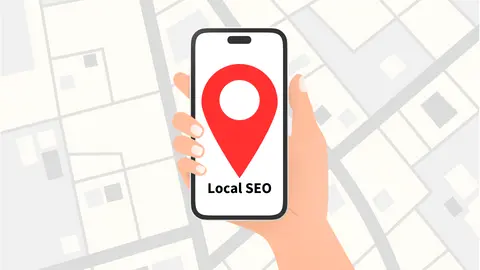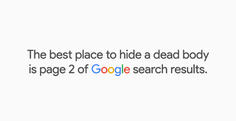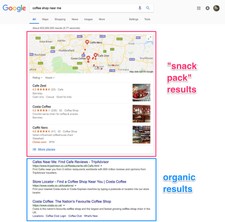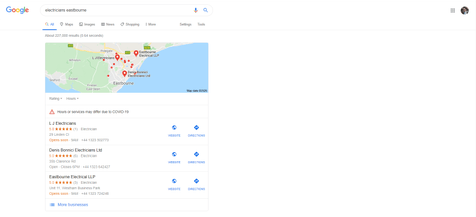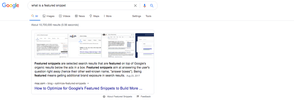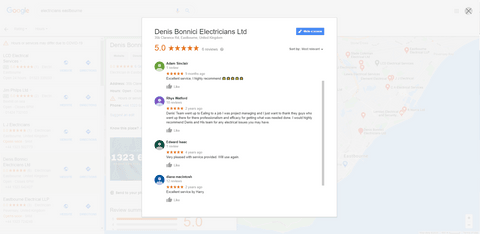When it comes to finding new customers through digital marketing strategies, Search Engine Optimisation (SEO) is one of the few tactics, when done correctly, has a very high return on investment when trying to keep ahead of your competition. For most local businesses, a strong SEO strategy is usually the difference between appearing on the first page of the search results or not. This is crucial to your online success: remember that less than 0.78% of Google users click onto the second page of the search results!
Ready to work with an local based SEO agency? Find out more about our result-driven SEO services and SEO packages here.
SEO is considered more of an ‘art-form’ rather than an exact science, due to the need to adapt to the ever-shifting goalposts of major search engines SEO guidelines (we focus predominantly on Google as it’s the most widely used one for SEO). This means consistently updating your website with relevant and useful information for your target customer, to maximise your chances of appearing on the first search engine results page (known as SERPs).
For small businesses (such as hairdressers, cleaning services, or florists) it is strongly recommended to focus specifically on local SEO. Why? This type of SEO strategy is highly effective at targeting potential customers searching for local services or products: which your business could provide the answer to.
What is Local SEO?
Local SEO is all about your business ranking high locally for a particular service or product, and should be a key aspect of your SEO campaign. It’s a process that focuses specifically on optimising a company’s website and Google Business Profile (GBP) page (which is required to have a chance of ranking in your location, we’ll discuss what GBP pages are later on in the guide) in order to increase its visibility in the local search results.
Google takes into account a user’s IP address or geolocation when deciding on the most relevant results to show them, depending on their search query. For example, notice how if you search for pizza online, you first see a list of local restaurants or delivery services near you? That’s local SEO at work.
Local search results typically show as a ‘Local Pack’ (also known as a ‘Knowledge Pack’ or ‘Snack Packs’) which is a selection of the most relevant Google Business Profile listings related to the search query, before showing the organic results below.
Source: Ahrefs
As ‘Local Packs’ appears more prominently in the SERPs than organic results, it’s vital for small business owners to focus their efforts on appearing in them. We strongly advise this for SEO.
What is Google Business Profile?
This is a free service offered by Google enabling business owners to create a business profile, and we recommend having one for SEO in Eastbourne. Your Google Business Profile gives users important company information directly, without needing to necessarily click onto your site. Details on your GBP listing include your phone number, business hours, address, reviews and appointment details.
If you are a local store that sells products, you can even list these on your GBP page, complete with prices and descriptions.
Crucially, GBP listings appear at position zero (which is above the organic search results) when a user is looking for a local based service or recommendation.
You can find all GBP listings on Google Maps, indicated with red dots alongside the company names. Depending on the device you are using, Google will list (underneath the map) 3 or more companies that provide that particular product or service.
The vast majority of users will look at this map or click on the companies that Google shows in this list. Once a user clicks on a company’s profile (assuming a business has set this up correctly) you can also add call-to-action options such as ‘Call’, ‘Email’, ‘Directions’ and ‘Website’ to encourage further engagement with your potential customers.
Why Google Business Profile is Important for SEO
Having a fully completed and optimised Google Business Profile is strongly advised for brick-and-mortar businesses. Why? The statistics speak for themselves:
- 88% of people who do a local search for local businesses on their mobiles visit or call a store within 24 hours (source: Nectafy).
- 46% of all Google search queries are for local information (source: GoGulf).
- 78% of mobile searches that are location-related result in an offline purchase (source: Forrester).
- 92% of users will select a business that appears on the first page of the local search results (source: SEO Expert).
It also plays an essential role in any effective local SEO strategy, as it increases your chances of appearing in the Google Local Pack and Google Maps, and therefore featuring prominently in the SERPs.
Yet 56% of local businesses haven’t claimed their Google Business Profile (source: GeoMarketing). As a small business owner, this presents an excellent opportunity for you to stand out from your other competitors who haven’t taken advantage of GBP.
What is Position Zero and Why Is It Important for SEO?
Also known as a featured snippet, position zero (P0) is the search result that can appear before the organic search results, depending on the user’s query. Featured snippets provide a brief summary to a user’s search query and can look like this:
Your SEO strategy should focus on optimising for this highly coveted spot where possible, which can be achieved through an optimised GBP listing. Obtaining position zero gives you more exposure than your competitors due to its position in the SERPs, and in turn, likely providing a boost in click-through-rates (CTR) to your site.
Optimising Your Google Business Profile
Keeping active on your GBP profile is an important Google ranking signal. For SEO, we recommend updating your Google Business Profile regularly through:
Using Google Posts
An excellent way to keep the lines of communication open with past customers (as well as attracting new ones) is through using Google Posts on Google Business Profile. This enables you to share both text and photo updates to all users who visit your listing. It is also a valuable opportunity to highlight any new updates or special offers that could increase traffic to your site.
Activating instant messaging
Using the chat feature on Google Business Profile is a way to encourage footfall and engage directly with potential customers. By enabling this feature on your profile, your company can instantly communicate with customers from a mobile, in a highly convenient manner.
Adding photos
According to Google, companies that use images in their GBP profiles receive 42% more direction requests than those without them. Make a strong first impression by regularly posting photos that grab the attention of potential customers to increase the likelihood of additional sales.
Encouraging reviews
Reviews are everything: approximately 90% of people read them prior to purchasing (source: Neil Patel) so don’t pass up on a valuable revenue opportunity.
Encourage customers to review you by creating a link so they can easily write a review for your firm, and be sure to reply to all of the reviews (good or bad) using the Google Business Profile dashboard.
Why? Engagement is important for ranking: the more positive reviews you acquire, the greater visibility your company will receive in the search results, impressing potential customers too.
Business interaction is also important for reputation too, showing that your business values the feedback it receives, whether it’s positive or negative.
How to Get Your Company on Google?
If you are a company offering services to your local area (such as a florist, hairdresser, bakery, electrician, photographer etc) and looking to create an SEO campaign, one of the first things you need to consider is keyword research. Based on this information, you should then optimise search queries with strong purchase intent.
What is Keyword Research?
Keyword research is the foundation of any effective SEO strategy, including for small local businesses. It involves identifying the most commonly searched terms (this could be a word or phrase) likely to attract a high volume of target customers to your website. Choose the wrong keywords, and you can fail to rank at all.
There are two main types of keywords. These are:
Head keywords: e.g. hairdressers
Long-tail keywords: e.g. women only hairdressers
Keyword research takes into consideration a number of factors, such as:
- Search volume: the lower the search volume the less competitive they are to rank for, and these typically yield higher conversions for websites.
- Competition: pick a highly competitive keyword in an oversaturated market, and you are less likely to rank for that keyword in the SERPs.
- Relevancy: the keyword needs to be relevant to your business, and a term that your target audience is likely to search for.
As previously mentioned, some search terms (which are usually long-tail keywords) have significantly higher purchase intent (also known as ‘commercial intent’) than others. For a successful SEO campaign, we advise honing in on these profitable searched terms.
Not sure what keywords with strong purchase intent look like? Take a look at the examples below:
‘Hairdressers near me’ or ‘best plumber in London’: specific queries that suggest the user is looking to make a purchase soon.
And compare them with:
‘How to cut hair like a professional’ or ‘How to edit professional photos’: these terms have ‘informational intent’, suggesting that the user is looking to find out more details before making a purchase. Ultimately, it suggests they are not ready to buy yet.
How Does My Website Help With My SEO Efforts?
A comprehensive SEO strategy has a huge impact on your website’s potential visibility in the SERPs, driving traffic towards your site (and therefore sales). For local business owners looking to expand their customer base to a wider audience, SEO is one of the best ways to achieve this.
Optimising your web design for SEO is important, as should a user not find an appropriate business under the ‘Google Business Profile’ listings, then they will inevitably scroll to the organic search results. These are the websites that Google believes have the most relevance to a users search query, and you can increase your website’s own chances of ranking high in these through a successful SEO campaign. But what does that incorporate exactly?
Creating a successful SEO strategy
- Engaging content
- Keyword research
- Mobile-friendly website
- Fast web page speeds
- Technical SEO
Engaging Content
Writing engaging and relevant content is what Google loves and we encourage you to invest time in creating it.
Compelling content helps your SEO campaign in a variety of ways:
- It helps to build backlinks to your website (valuable for SEO as it increases the domain authority of your site, which is an important ranking factor).
- It’s an excellent opportunity to include target keywords, helping to increase your company’s visibility in the search engine results.
- Creating engaging content reduces bounce rates (i.e. visitors who go on to your website and then click ‘back’ straight away), which also count as a Google ranking signal.
Keyword Research
Conducting keyword research is an essential part of SEO, and can have a dramatic impact on search rankings if used correctly.
Mobile-friendly website
Having a mobile-friendly site is another core component to attracting more online attention to your company.
More than half of Google searches are made via mobile devices, so it’s important that you adapt your website to mobile users. They are also more likely to contact or visit a business if it has a mobile-friendly website.
Fast Web Page Speeds
Ensuring your website is fast and quick to load is also integral to attracting more customers, especially if they are on a mobile device.
Even with 5G connection speeds, users have an extremely low attention span (about 2 – 3 seconds) when waiting for a web page to load. Every second counts.
Technical SEO
Meta tags, schema, backlinks are all elements of technical SEO and help search engines find your website and list it on their search pages at a faster rate.
Making sure these components are correctly coded into your website and continually well maintained will again position your company better when conducting SEO campaigns.
If you do not have any of the above, then Google is unlikely to list you on the first page of the search results, which is vital to attracting new customers online to your business. Remember: 95% of users have never clicked to view the second page of Google!
How Can We Help Your Efforts with our result-driven SEO Services?
We start off with getting to know a little bit more your business, products, services and customers so that we can identify what your SEO campaign should focus on.
We then tailor our seo services to your business to maximise the results of getting to the top of Google’s local business listings. This involves:
- Creating and optimising your Google Business Profile page: the first task we do when helping companies with their SEO efforts is to ensure their Google Business Profile is created or up-to-date.
- Discussing the best GBP strategies for your firm: such as adding posts, services and products, as well as looking at overall GBP profile management.
- Keyword research: using tools such as SEMrush, Google Analytics and Google Search Console to identify what keywords or products/services are the quickest and easiest to yield results for your local business.
- SEO campaign strategy: for broader or more competitive keywords, we identify the best ways of ranking more prominently for them. This may include content writing, blogging, social media campaigns, adapting your website so users stay on there longer etc.
- Mobile-friendly: We will adapt your website to ensure that it is mobile-friendly, a key SEO ranking factor.
- Technical SEO: this includes more advanced areas of SEO, such as local link building. This may include creating backlinks with directories such as Check-a-trade, Yell.com or TrustPilot but could also include local paper directories such as the Friday-ad.
- On page SEO: We will analyse each of your service and blog pages through our trusted tools to advise on what content you need to create or modify in order to compete with your rivals.
There are over 200 ranking factors built within the Google search algorithm and it is vital that you partner with a company that continues to keep up to date with the latest changes of the search algorithm in order to give you the best chance of getting results.
You can read more about our result-driven SEO services here. Alternatively, if you are ready to move forward with your SEO campaign you can receive your free SEO Audit.
We hope this short guide helps you understand more about implementing SEO within your digital marketing strategy and our result-driven SEO services for your business.
If you have any further queries, we look forward to speaking with you.
